Nissan Leaf long-term review
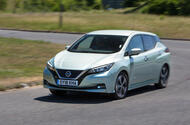 The first Leaf was an EV pioneer. Can the new one make as big an impact? We found out over six months
The first Leaf was an EV pioneer. Can the new one make as big an impact? We found out over six months
Why we ran it: To see if Nissan’s advanced the cause of EVs at the affordable end of the market
Month 6 - Month 5 - Month 4 - Month 3 - Month 2 - Month 1 - Prices & specs
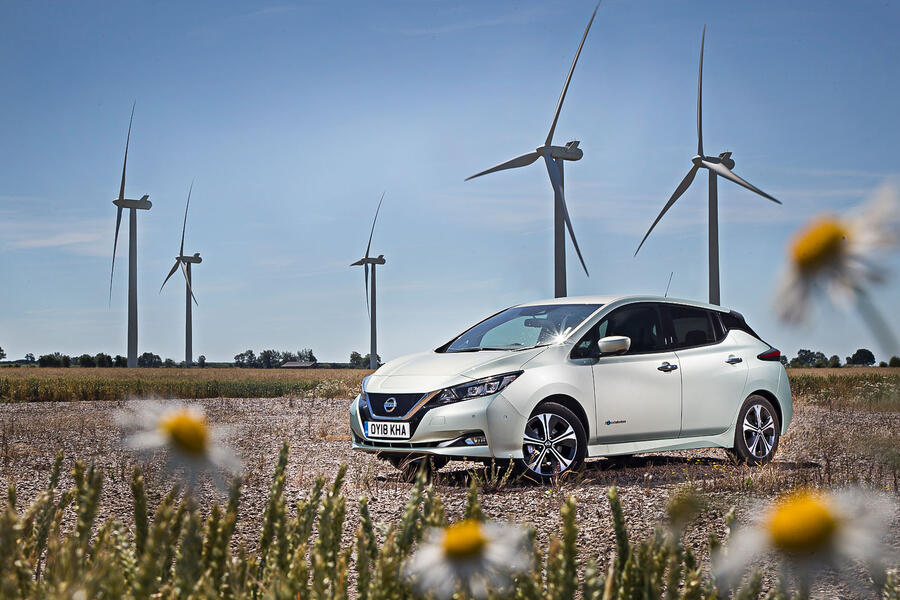
Life with a Nissan Leaf: Month 6
EVs have come a long way in just six months. Did the Leaf prove to us during that time that it won’t get left behind? - 16th January 2018
This is an exciting time in the evolution of electric vehicles. Ranges are rising, charging times are falling and a host of all-new models across a wide price spectrum are either already here or due this year.
Battery-powered cars are getting to the point where they’re truly viable propositions for a large proportion of motorists. Many of them look mouthwatering, too – especially if, like me, you’re already a fan of such cars.
But where does that leave existing EVs such as the Nissan Leaf we’ve been running for the past six months? Let’s not forget that EVs wouldn’t be at the level of maturity they are today without the influence of Nissan’s pioneering hatchback.
The second-generation model, launched early last year, may not have really moved the game on in relation to existing rivals such as the Volkswagen e-Golf and the smaller Renault Zoe, but it brought useful improvements in range, performance, practicality, interior quality and driving manners compared with the 2011 original and remains a key player at the more affordable end of the market.
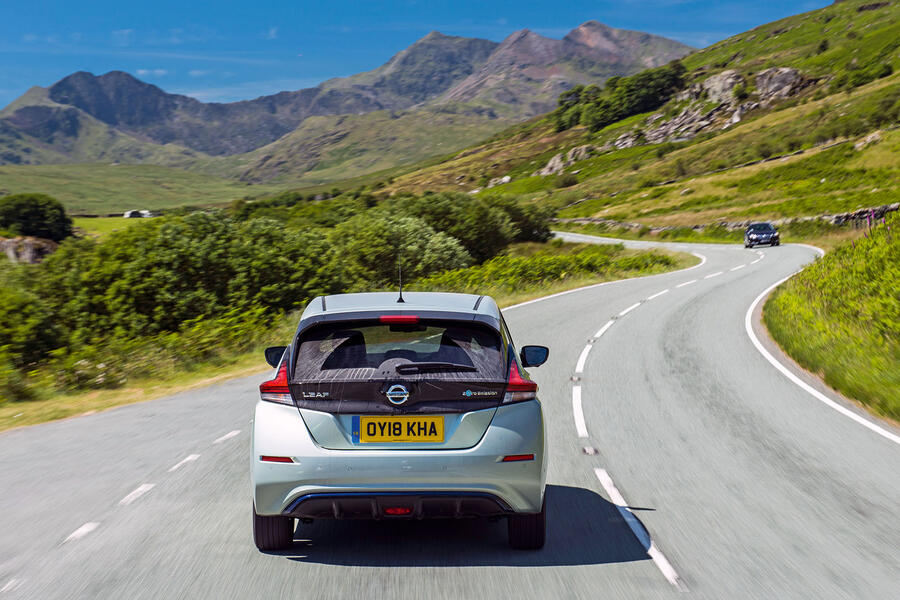
However, its range between charges has now been made to look decidedly ordinary by similar-priced newcomers from Kia and Hyundai, begging the question: did Nissan push the boat out far enough this time around to make the Leaf practical for all-purpose use, not just as a short-haul urban runabout but for longer trips as well?
Let’s deal with range first. During the summer months, I found I could cover about 140 miles between charges on average, or up to 160 if all of the miles were around town, driving at the same speeds as I would in any car – in other words, not making any specific effort to eke out as many miles as possible per charge.
That was adequate for the majority of my needs, including some longer trips of 200 miles or more, although such journeys still required advanced planning and at least one half-hour stop for a partial top-up at one of the rapid chargers that can now be found at motorway services.

Some of my more intrepid colleagues even used the Leaf as transport when taking on the Three Peaks Challenge, covering 500 miles between Ben Nevis in Scotland and Snowdon in Wales without too much hassle. But as is the case with most EVs, the range dropped by a good 40 miles when the weather turned colder.
In general, the Leaf was a pleasure to drive, thanks to its comfortable ride, the refinement and instantaneous response of its electric motor and low noise levels, even at motorway speeds. The ability to drive it using just the accelerator, owing to the strong regenerative braking effect of Nissan’s ‘e-Pedal’, came in very handy in urban driving.
The fact that you could turn it off completely was welcome when parking (because the car was then able to creep like a normal automatic) and on the motorway, when coasting was generally preferable to slowing rapidly when you lifted off.
Using the regular braking system was something to be avoided as much as possible, though, because the pedal felt spongy and often resulted in very abrupt stops.
The fact that you have to be stationary with your foot on the brake pedal to switch between the two e-Pedal modes was inconvenient at times, too; I like being able to change the level of regen on the move, as some of the Leaf’s rivals allow via paddles on the steering column.
The interior is roomy and there’s lots of useful storage space, but it’s not what you’d call classy. I didn’t really get on with the driving position, either, mainly because the steering column doesn’t adjust for reach and the seat doesn’t provide much support, becoming uncomfortable on longer trips. A bigger, clearer, more responsive infotainment touchscreen and a more configurable, fully digital instrument panel wouldn’t have gone amiss, either; both seemed surprisingly low-tech for a car like this. There were a few rattles to contend with, too, notably from the seatbelt buckles tapping against the hard plastic trim on the door pillars.
While it’s great that the Leaf comes with heaps of driver aids, I found some of them quite intrusive – notably the automatic emergency braking, which tended to activate too often, reacting to parked cars and even the barriers in our car park. The overly sensitive front and rear parking sensors were highly irritating, too. However, the adaptive cruise control proved effective on the motorway and the blindspot monitors came in handy all the time.
Since these items are also available on the mid-range N-Connecta trim, that’s the one I’d go for next time; I wouldn’t miss luxuries such as the advanced but rather time-consuming ProPilot Park self-parking system that’s exclusive to the Tekna version.
I’ve very much enjoyed running around in the Leaf every day, despite its flaws. And compared with hatchback rivals, the Leaf remains competitive, thanks to its low running costs (just 4.8 pence per mile in electricity), practicality and comfortable ride, and a good choice for mainly urban use. However, it isn’t a game-changer. With real-world ranges of more than 250 miles, that accolade must go to the Hyundai Kona Electric and Kia e-Niro family SUVs. Likeable though it is, the Leaf already seems a little old hat.
Allan Muir
Second Opinion
For urban driving, this must be one of the most relaxing cars money can buy, at least in terms of powertrain and sound insulation. It’s eerily quiet, lazily undemanding to operate and, perch of the seats notwithstanding, actually very comfortable. I also like the progressive design, which seems to have grown on me
Richard Lane

Love it:
RIDE COMFORT A wonderfully compliant ride soaks up bumps and potholes better than most cars of its size and price.
REFINEMENT Even by EV standards, the Leaf is exceptionally quiet, generating very little wind and road noise.
INTERIOR SPACE Lots of rear leg room and a good-size boot make the Leaf quite practical by hatchback standards.
Loathe it:
DRIVING POSITION The seat’s short and unsupportive and the steering wheel adjustment’s limited. Visibility isn’t great, either.
CABLE STORAGE I’d prefer a bespoke compartment under the boot floor to the nets on the sides of the boot.
Final mileage: 4330
Life with a Nissan Leaf: Month 5
No compartment for cables - 3rd January 2018
Although the Leaf has two nets in the boot for keeping coiled-up charging cables out of the way, most of the time I end up stashing the Type 2 lead (which gets used most) in the rear footwell behind the driver’s seat. What I’d prefer is a dedicated compartment for leads, like the one in the BMW i3’s nose, or under the boot floor, as in the Kia e-Niro.

Mileage: 4250
No chance of our practical EV leaving us cold: you can pre-heat it - 5th December 2018
Nissan’s slightly unconventional – some might say innovative – method of heating and cooling the Leaf’s interior has always puzzled me a bit, even going back to the first-generation model.
All of the regular controls to adjust temperature, fan speed and the rest are present and correct, but there’s also a ‘heat’ button on the control panel that you must push if you want actual hot air to come out of the vents.
This is because, in the absence of any hot exhaust gases to recycle for air-warming purposes, the Leaf is fitted with a heat pump that supposedly does the job in an energy-efficient way. The heat pump works by drawing in and compressing outside air to create heat that’s then blown into the cabin, using less power than running an electric heater.
This is relevant because I’ve been using the car’s climate control timer every morning in recent weeks to pre-warm and demist the cabin in advance of me setting off to work.
The condensed version of the owner’s manual suggests that the timer works only if the car is plugged in to the mains, but that didn’t sound right to me, so I had another read of the main manual and it was somewhat clearer on the fact that the car can be pre-warmed via either the mains or the high-voltage drive battery (the latter for no more than 15 minutes, as I understand it).
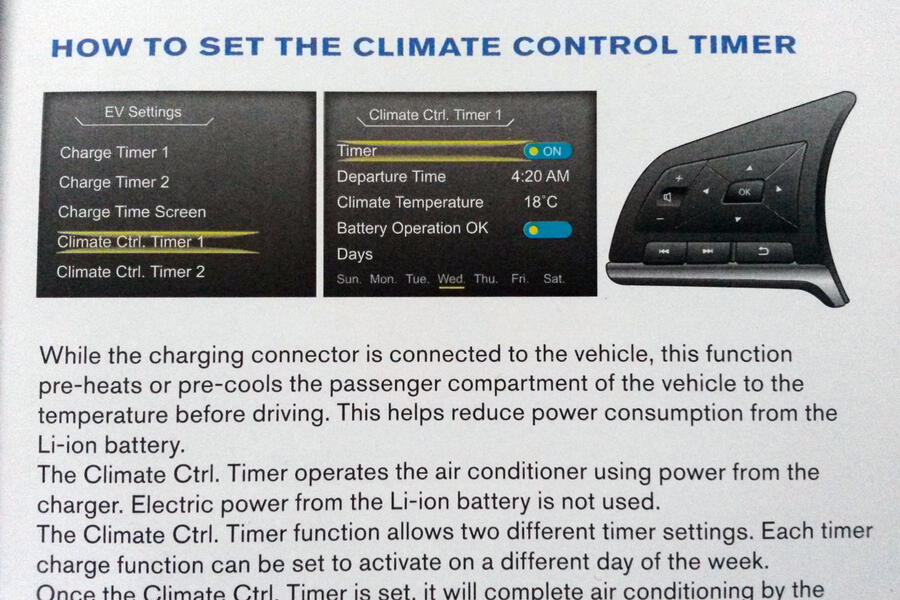
I’m still not sure I fully understand how it all works, but it seems to be doing the job reasonably well even when the charger isn’t connected, leaving the cabin warm and mostly mist-free on cold mornings, at the expense of chopping a few miles off the range. The side windows still seem a bit reluctant to clear properly, though, and the unheated door mirrors take even longer.
Talking about the size of the owner’s manual leads me on to the subject of the Leaf’s practicality. Not only is the glovebox big enough to accommodate said tome with room to spare, but there’s also lots of other useful storage space, from a sizeable cubbyhole beneath the armrest between the front seats to a useful, sloping slot at the base of the centre stack, lined with grippy rubber, that’s ideal for a phone or a car park ticket.
Interior space is impressive too. The fact that the Leaf is significantly longer than its closest rival, the Volkswagen e-Golf, means you get not only more leg room in the rear seats but also a much bigger boot (435 litres versus 341 with the rear seats up). Although the Leaf doesn’t come with a height-adjustable boot floor like its rival, leaving quite a big lip at the entrance, its extra depth and length make it much more accommodating and accessible than the e-Golf’s fairly shallow space, even though I still find the electric tailgate switch awkward to locate and use.

The other issue that detracts from our Tekna-spec car’s practicality is that the Bose premium sound system’s subwoofer – an oblong box mounted on the boot floor – tends to get in the way if you’re trying to slide a big box or suitcase all the way inside. If you’re really into your music, the benefits of having the subwoofer will no doubt outweigh the downsides but, personally, I’d rather have a flat boot floor all the way up to the rear seatbacks. That’s what you get in lower trim levels.
However, there’s no way to overcome the huge step that you’re left with when you fold the rear seatbacks down to accommodate long items.
Love it:
THE STEERING Reasonably quick, ideally weighted and accurate, it’s well suited for city driving. It isn’t terrible at motorway speeds, either.
Loathe it:
RATTLES Unused seatbelt buckles tend to rattle against the pillars’ hard plastic, driving me crazy. I’ve taken to driving with them all buckled up.
Mileage: 4005
Life with a Nissan Leaf: Month 4
Clock sets itself - 14th November 2018
On the morning after daylight saving ended, I assumed I’d have to manually adjust the Leaf’s clock. After fiddling with settings menus, I realised the clock had an auto-adjust mode. Only then did I actually bother to look at the clock – and, of course, it was already set to the new, correct time. That’s one benefit of having a ‘connected’ car, I guess.
Mileage: 3835
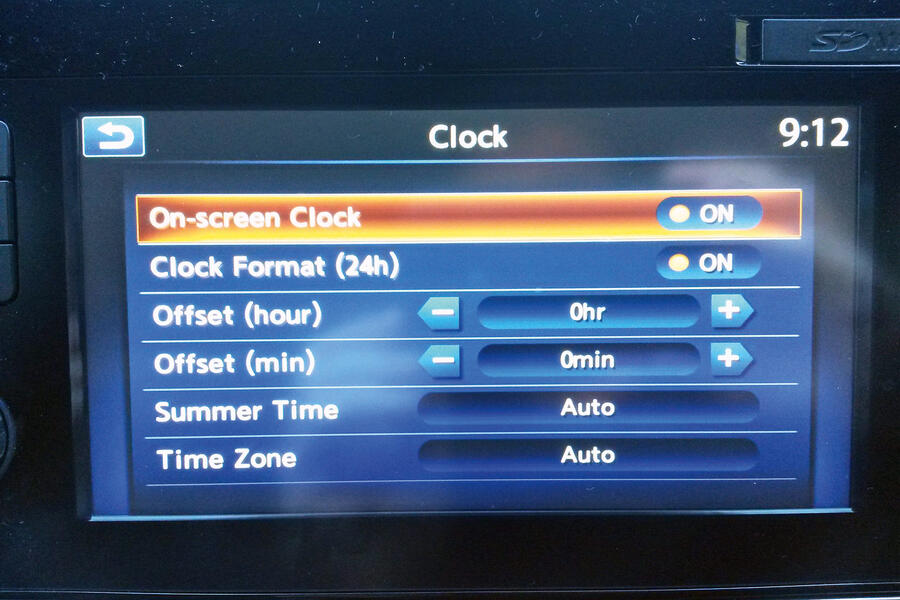
Overzealous driving aids are starting to get bleeping annoying - 31st October 2018
The Leaf’s indicated range with a fully charged battery has begun to drop as the weather has cooled down, as is the case with most electric cars. During the summer, I’d normally expect to see between 160 and 170 miles showing on the instrument display, but recently it’s been down to around 145 miles.
That still leaves me able to cover plenty of miles between recharges, so I’m not overly concerned, as long as the indicated figure doesn’t drop much more. However, I’ve found myself looking enviously at the claimed 300-mile and real-world 260-mile ranges of the new Hyundai Kona Electric 64kWh and thinking how much more convenient that would be…
Even with what suddenly seems like a fairly mediocre range in comparison with the Kona’s, the Leaf continues to be an ideal car for urban use, mainly thanks to its plush ride and spacious interior, both of which are much better than you’ll find in existing rivals such as the Volkswagen e-Golf.
Much as I like the way the car drives, though, I’m noticing more and more things about the Leaf that irritate me to some degree, taking the gloss off what would otherwise be a very satisfying ownership experience. And quite a lot of the blame lies with the car’s many electronic driver aids, which don’t seem very well adapted to life on London’s ridiculously narrow, twisty and overcrowded streets.
The automatic emergency braking, while being a highly commendable safety feature, is prone to intervening far too often for my liking and in situations that seem completely safe to me. For example, it happens randomly as I’m driving up to the barrier to get out of our multi-storey car park, going at snail’s pace and doing nothing differently from any other day. The AEB also reacts if you go for a gap that it deems too narrow, as well as to pedestrians and parked cars if they’re in front of you as you go around a bend in the road. It’s not only frustrating but also makes me feel as though I’m not fully in control of the car.
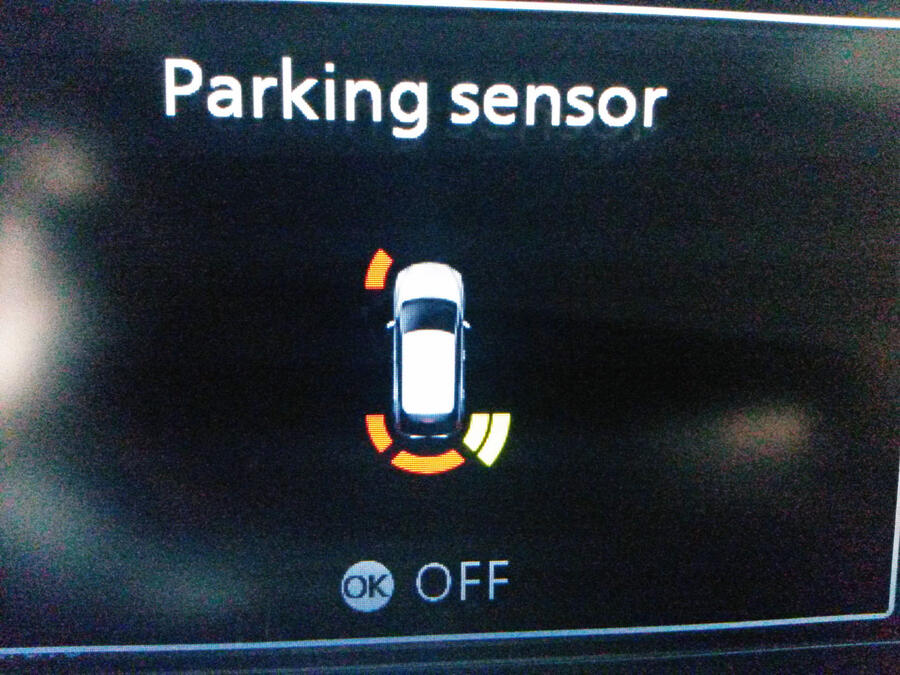
Then there are the parking sensors. When the battery pack isn’t being recharged, I have a habit of parking in a quiet corner of our car park, with the lefthand side of the car up against a wall, and the parking aids are obviously convenient as I’m backing into the space.
The problem is that they aren’t smart enough to know when they’re no longer needed. Jump back into the car later and the side and rear sensors start screaming again the instant the gear selector is put into Drive, forcing me to hit the ‘off’ button every time. The same is true if I’m driving down a narrow road with parked cars at the sides. Previous cars I’ve run, such as the Land Rover Discovery Sport, had much less presumptuous sensors than the Leaf’s.
I could also grumble about the unnecessary number of alerts when you open a door or the boot and the fact that you have to accept or decline something to do with data telematics on the touchscreen every time you start the car, but I won’t, because the Leaf certainly isn’t alone in doing such things. However, they aren’t making me feel as warm and fuzzy about the Leaf as I would be if its driving manners were the only consideration.
Love it:
NOISE SUPPRESSION The Leaf is one of the quietest cars we’ve ever tested; wind and road noise are very subdued.
Loathe it:
INFOTAINMENT The 7.0in touchscreen seems rather meagre these days and the menus aren’t too easy to navigate.
Mileage: 3730
Life with a Nissan Leaf: Month 3
Frosty failings - 10th October 2018
On cold mornings, the Leaf’s side windows take forever to clear. In many cars, you can open and close the windows once and use the seals to scrape off condensation, but not the Leaf. The front and rear screens can have cleared completely but the side windows will still be almost impossible to see through. Time to start using the Leaf’s climate control timer…
Mileage: 3160

Battery-powered hatchback continues to deliver fuss-free urban motoring - 26th September 2018
The Leaf’s indicated range is proving to be a tad optimistic if much high-speed driving is involved. Although it changes a bit, depending on how the car has been driven previously, I’ve regularly been seeing between 160 and 170 miles on the display after each full battery recharge, but in a mixture of urban and open-road use the actual usable range is closer to 140 miles.
The discrepancy was first noticed one weekend as I was heading down to West Sussex for a party at a country pub – a round trip of about 120 miles from south-west London. With a range of just over 160 miles showing, I figured I’d have no trouble getting there and back without recharging. In the end I made it, but it was much tighter than expected, with less than 20 miles showing when I got home later that night.
The shortfall has been similar every time I’ve done a longer trip that includes motorway or dual-carriageway sections. It isn’t a problem, but it does emphasise how much of a toll higher speeds take on the range.
Meanwhile, I’ve had a few goes at using the optional ProPilot Park (£1090) driver aid that’s fitted to our Leaf. Now, I have to confess that I don’t really see the point of such aids unless you really can’t park a car to save your life, but Nissan’s system promises to be more advanced than many previous ones. It does almost everything itself and can safely insert you not just into a parallel space but also frontwards or backwards into an end-on bay.
I can report that it works – albeit slowly. Once you’ve confirmed the space you want and the direction in which you want to enter it on the infotainment screen, you simply hold your finger down on a button on the centre console and the car does the rest all by itself: accelerating, steering, braking, the lot.

The fact that the process takes about three times longer than if I’d done the job myself – a good 45 seconds in some cases – is enough to put me off using it, though. If you’re reversing into an end-on space, having started at right angles behind it, the car will often require at least two forward and backward manoeuvres before it’s done. It also has a disconcerting habit of speeding up once it’s heading almost straight in and then braking abruptly at the last second. The system sometimes struggles to identify the parking space unless it’s very clearly defined too.
I suspect that if you tried to use the parking aid in a busy car park, you’d have a queue of honking cars behind you long before you’d completed the manoeuvre. Frankly, I reckon it’s far quicker and easier to do it myself, especially as the Leaf allows you to go swiftly from drive to reverse and vice versa at low speeds without putting your foot on the brake pedal.
In most other respects, the Leaf is exceptionally well adapted for urban use. This fact was brought into sharp focus again recently after back-to-back drives in three new family SUVs with small petrol engines and manual gearboxes. They were all perfectly decent, except that I found them quite awkward to drive around town. And no, it wasn’t because I’d forgotten how to drive a manual. Then I jumped back into the Leaf, with its torque-laden electric motor and no gears whatsoever, and the contrast could hardly have been more extreme.
Unlike most conventionally powered cars, the Leaf never hesitates when pulling away from traffic lights or out of a side road into the flow of traffic. You never have to wait for the engine to restart or the gearbox to make up its mind which ratio is appropriate. With automatic hill hold provided by the electric motor, you’ll never find yourself accidentally rolling backwards on an incline, either. All told, the Leaf is pretty hard to beat when it comes to town driving.
Love it:
CHARGING INFORMATION A row of blue lights atop the dash clearly shows the charging status. They’re easily seen when standing by the charging port too.
Loathe it:
INFOTAINMENT The touchscreen and icons are small and the system is fairly sluggish to respond to inputs. Not what you’d expect of a car like this.
Mileage: 3075
Obstructed view - 12th September 2018
Visibility through the windscreen towards the nearside front corner of the Leaf is surprisingly poor. The high-mounted black panel containing the forward-facing cameras for the electronic driver aids doesn’t help, but the main culprit is the chunky rear-view mirror, which blocks a large section of the windscreen and makes seeing to the left at junctions awkward.
Mileage: 2866

Life with a Nissan Leaf: Month 2
Superfluous speedo - 29th August 2018
Although the Leaf’s instrument panel is clear and the digital part is configurable, I don’t understand why it still has an analogue speedometer, which seems anachronistic in such a futuristic car. I have the digital screen set up to show a digital speed readout, which I much prefer. Surely a high-tech, fully digital display that does away with traditional dials would be more appropriate.
Mileage: 2727
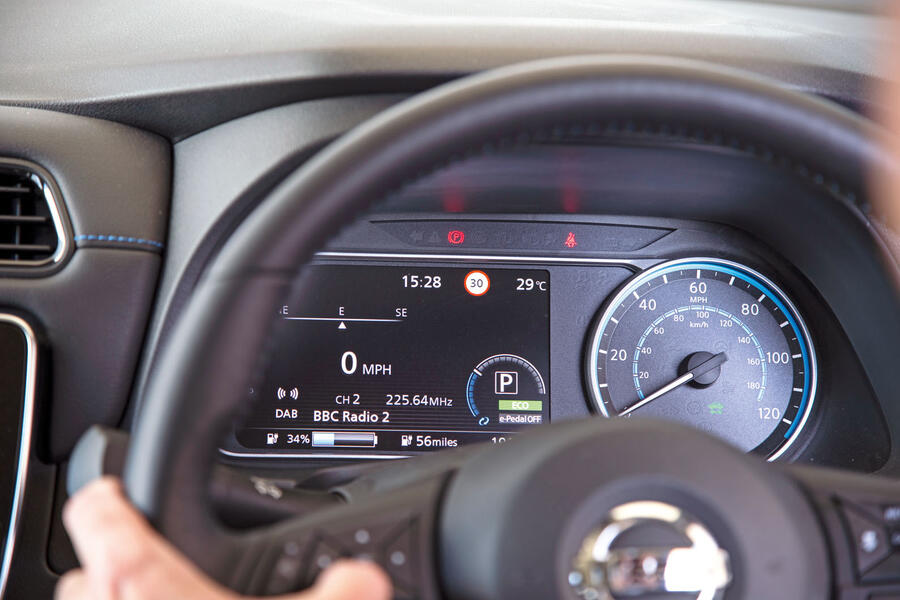
Have electric car. Will travel. Distance no object. (Rapid chargers permitting.) - 15th August 2018
Our Leaf has racked up a surprising number of miles in its first few weeks with us, immediately proving that it’s capable of much more than just pottering about in town – although it’s brilliant at that too.
Not only have I taken it on at least three trips of close to 200 miles each, but some of my more masochistic colleagues also nabbed it to use as unconventional transport for this year’s Three Peaks Challenge.
Although 160-170 miles of indicated range doesn’t sound like enough to give you complete freedom, the rapid charging infrastructure at motorway services and other locations along major routes now seems to be good enough that longer runs can be relatively painless in an EV with the Leaf’s capability.
Once, I might have been deterred from attempting such trips by the prospect of having to wait for hours while the batteries recharge. But in reality, I won’t have to, because in those situations, the Leaf is rarely likely to need a 0-100% charge. In most cases, a strategic top-up from, say, 30% to 80% in 30 to 40 minutes is enough to allow me to complete each journey. That I can handle.
Admittedly, I’ve tried this quick-stop approach only a couple of times so far, but it appears that other EV drivers are doing likewise and, to me, it seems quite liberating. It not only reduces range anxiety (by not letting the battery pack get close to running dry) but also allows me to drive the Leaf at the speed I want to – by which I mean comfortably keeping up with most other traffic on motorways – as opposed to chugging along at snail’s pace, trying to eke out every last mile of range from each charge.
When it’s working properly, Ecotricity’s Electric Highway smartphone app seems like a neat way of connecting with the charging point, paying for the energy used and keeping tabs on progress. However, on one occasion the app went AWOL part-way through a top-up and refused to let me stop the process early, as planned. I had to phone Ecotricity to get them to do it remotely.
The only downside of pay-as-you-go chargers such as Ecotricity’s is that they’re relatively expensive compared with recharging at home. A 30-minute top-up, adding about 80 miles to the Leaf’s range, is roughly £6 – probably three times the cost of a full overnight charge at home. You’re paying for the speed and convenience, though, and that figure still seems like a bargain next to the cost of the petrol or diesel you’d use to cover the same distance.
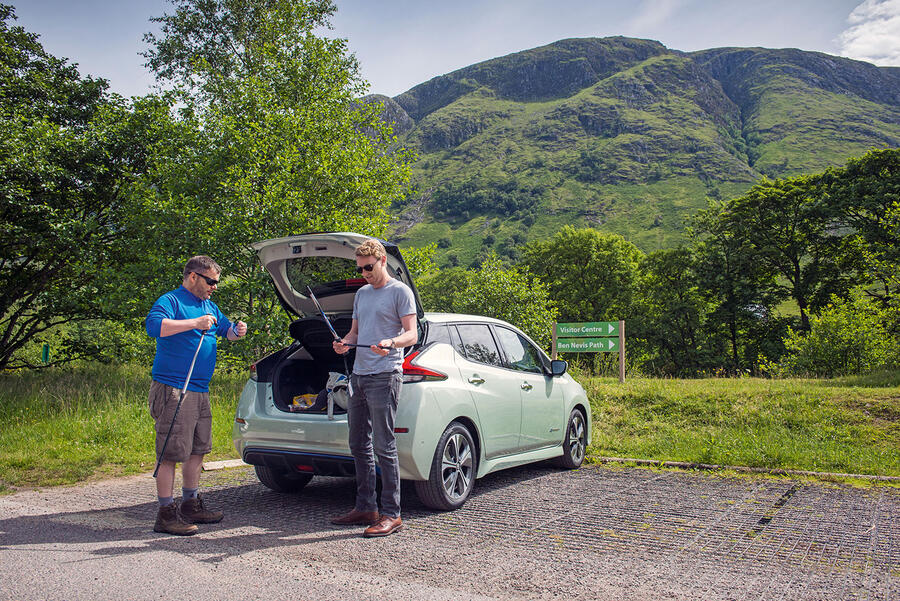
Meanwhile, as expected, the ability to drive the Leaf using just one pedal is proving indispensable – around town at least. The e-Pedal function is especially convenient in stop-start city traffic and on stretches of road with lots of sleeping policemen across them. It’s also wonderful when going down ramps in multi-storey car parks, controlling the speed of your descent perfectly without you really having to do a thing.
Of course, e-Pedal is only as good as your ability to accurately judge when to lift off the accelerator, especially if you want the car to come to a complete halt. It soon becomes second nature, though – and frankly, you don’t want to use the brake pedal unless you really have to because it feels horribly spongy at first and then very abrupt. The combined effect of the two braking systems results in an uncomfortable stop, with anything that might be sitting on the back seats slamming into the footwell.
Most of the time, though, the Leaf is proving to be a highly agreeable car to drive every day. With its perky performance, absorbent ride and reasonably quick, well-weighted steering, it’s exceptionally good for commuting and zipping around town in.
And if my strategy of making better use of motorway rapid chargers for quick battery top-ups pays off, I can easily see me being able to use the Leaf as my only car for the next six months.
Love it:
REFINEMENT Noise levels are exceptionally low all round and the powertrain is silky smooth, as you’d expect of an electric motor
Loathe it:
TAILGATE RELEASE Getting into the boot is trickier than I’d like. The button on the tailgate is awkward to locate and operate and there’s no other means of opening it
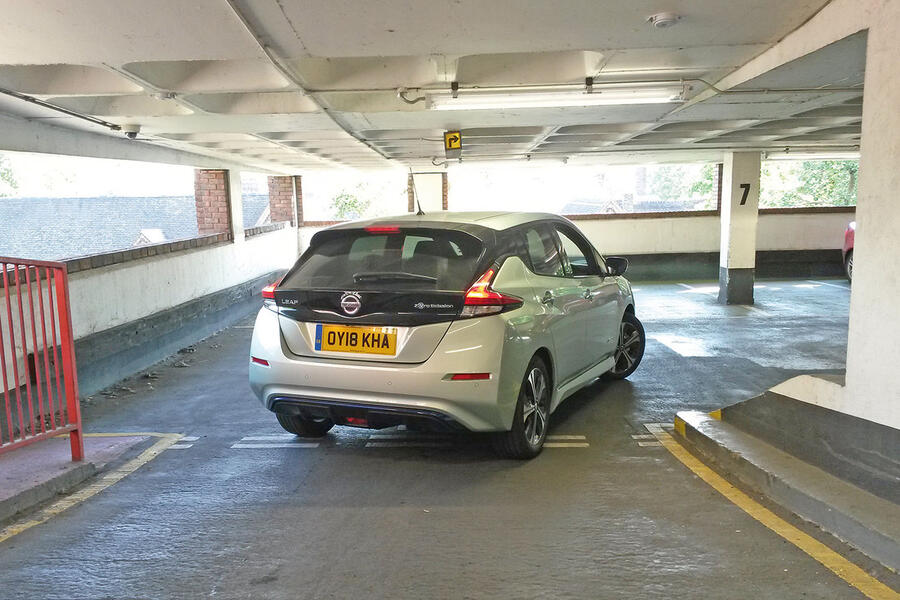
Mileage: 2430
Life with the Nissan Leaf: Month 1
Taking charge of electric top-ups - 1st August 2018
I’ve had a Chargemaster wallbox installed in my garage for overnight recharging. I had to make do with a 3kW wallbox rather than a faster 7kW one, but it’s still better than plugging the car into a domestic socket. It has its own tethered cable, too, so there’s no need to faff around with the one that comes with the car. And it’s paid for by the government.
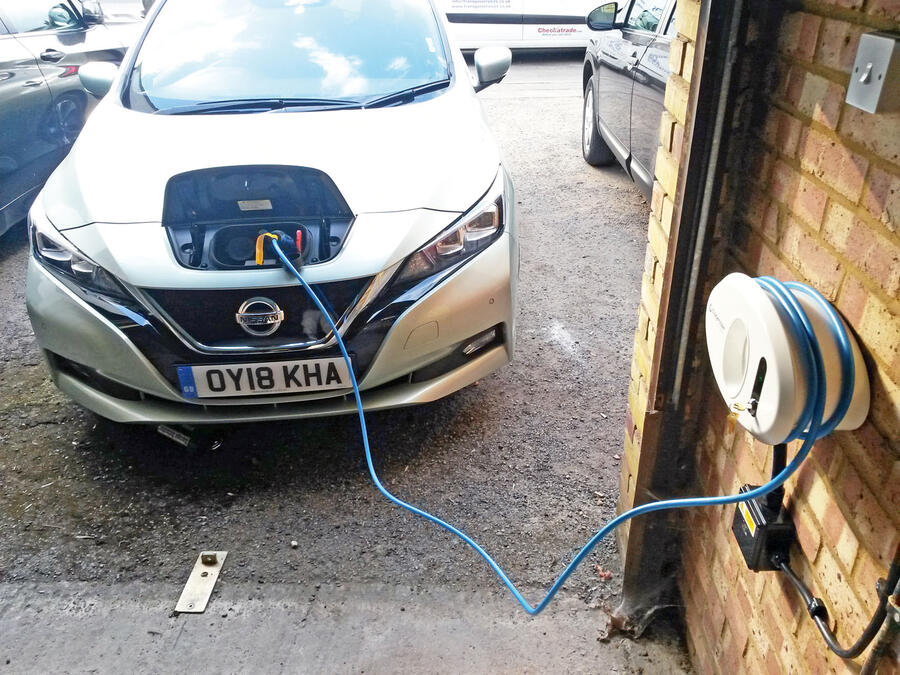
Mileage: 1245
Welcoming the Leaf to our fleet – 18th July 2018
I have a theory about electric cars. As these things go, it hardly ranks up there with Einstein’s Theory of General Relativity, but here it is anyway: I reckon EVs are good for your health.
I’m not just talking about the fact that they don’t produce any exhaust emissions, thereby contributing to an improvement in the quality of the air we breathe. I’m convinced that driving an EV is also a guaranteed way of reducing stress levels and blood pressure. Even the most humble of EVs are so relaxing to drive that I rarely feel any kind of aggression towards other road users or like I’m in a rush to get anywhere.
For that reason – plus the fact that petrol and diesel prices are creeping up to extortionate levels – I’m exceedingly happy to be back behind the wheel of another electric car (having previously run a Renault Twizy and a BMW i3) for the next six months.
Sadly, it isn’t a Jaguar I-Pace, but it’s no less interesting or significant. It’s a new Nissan Leaf. The car that kicked off the modern era of EVs in 2011 has moved into its second generation as of early this year, and it’s a useful step forward compared with its predecessor in every way.
Among other things, it’s got more power and performance than before, a bigger battery pack, a longer claimed range and a smarter interior. Its progress prompted us to give it a game-changer award at this year’s Autocar Awards.
The claimed 235-mile range under the old NEDC test procedure can be discounted as unachievable, but Nissan is now quoting a real-world range of 168 miles, based on the new WLTP test. That’s better than the 124-mile figure that Volkswagen claims for the e-Golf, but only about the same as what you can already get out of a Renault Zoe. Frankly, I’d been hoping for something closer to 200 miles this time around.
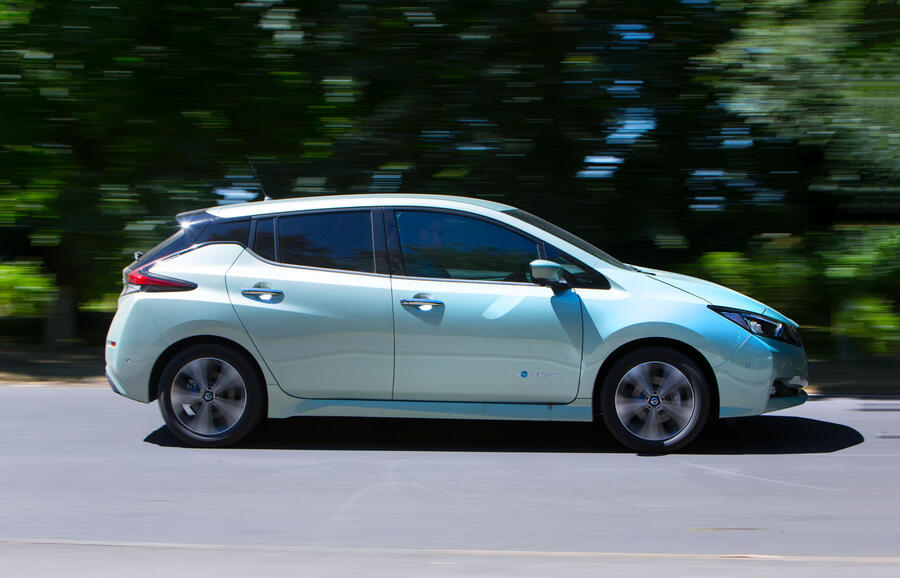
The 40kWh battery pack can be recharged with a three-pin domestic socket (taking a tedious 21 hours), a seven-pin plug (seven and a half hours via a 7kW wall box) or a 50kW public rapid charger (40-60 minutes, to 80% capacity). With a subscription to Chargemaster’s Polar network, we’ll have access to more than 6500 public charging points in urban areas around the country.
For longer trips, I’ve also registered the car and a credit card with Ecotricity, which provides all of the rapid chargers at motorway services, so I’ll be able to access them and pay for each recharge via a smartphone app. However, previous experience suggests that the majority of the recharging will be done at home or the office, both of which are convenient for me.
Of the three trim levels available, mid-range N-Connecta gives you as much kit as you’re likely to need, but we’ve gone for range-topping Tekna, mainly because it opens the door to the full gamut of Nissan’s latest safety technology and driver aids. Standard equipment includes ProPilot (which combines active cruise control with lane-keeping assistance and blindspot monitors), as well as heated front and rear seats with leather and ‘ultrasuede’ upholstery, a surround-view monitor, a Bose premium audio system and full LED adaptive headlights.
On top of that, we’ve added ProPilot Park (£1090 with Tekna trim only), which is an almost fully automatic parking aid, and Spring Cloud Green metallic paint (£575).
I was never a fan of the previous Leaf’s interior or driving position, but the new one is a definite improvement, with a much more contemporary design and higher-quality materials. On first acquaintance, I still have some reservations about the driving position, mainly because the steering column doesn’t adjust for reach and I feel as though I’m perched on top of rather unsupportive seats. However, I’m not expecting this to be too much of an issue once I’ve settled in properly.
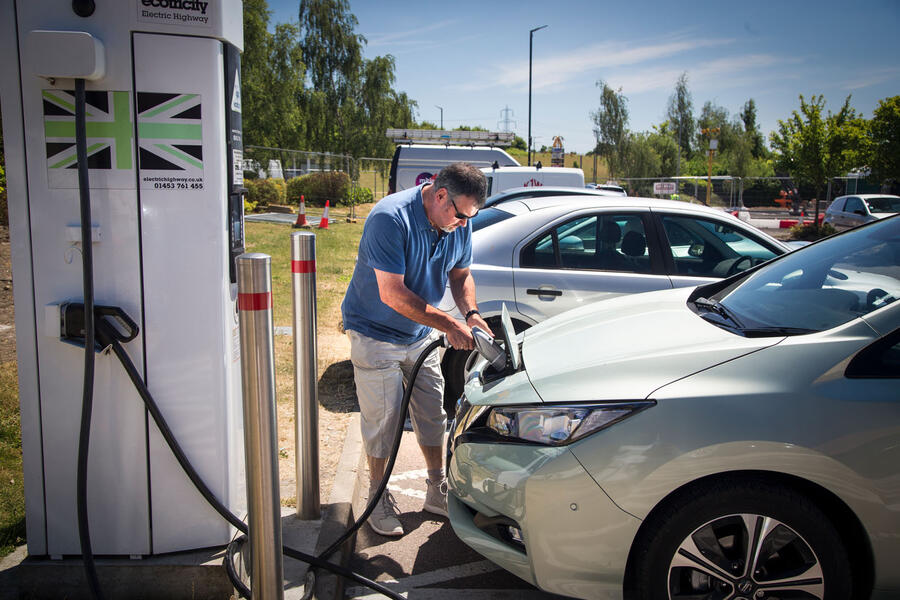
Practicality is a strong point for the Leaf, with plenty of space front and rear and a good-sized boot that’s hindered only slightly by the presence of a subwoofer on the floor. There’s a cargo net on either side of the boot for retaining the two charging cables – not as good as a separate compartment but hopefully convenient enough to prevent the boot from getting cluttered up with tangled cables.
Another piece of new technology for the Leaf is e-Pedal – a strong regenerative braking function that allows you to drive fairly easily most of the time without touching the brake pedal. I know from previous experience with the i3 that this ability to drive using just one pedal makes for exceptionally smooth progress, especially around town. There’s no creep in this mode, though, so it isn’t ideal for parking. In which case, you can switch it off, giving the same level of creep as you’d get in a normal automatic.
As you’d expect, the Leaf is wonderfully smooth and quiet when it’s rolling along, and its ride is remarkably comfortable, while the 148bhp electric motor provides lively, linear performance. The new car also feels more stable than its predecessor did, so I’m hopeful that it’ll be more assured on the motorway.
The big questions for me are ‘Has Nissan made a big enough step forward compared with the original Leaf and its contemporaries?’ and ‘Is the Leaf now usable enough to give it widespread appeal?’. No matter what the answers turn out to be, there are two things I can count on. One: my running costs are about to drop dramatically. And two: my doctor will be happy, as I’ll be in rude health.
Alan Muir
Second Opinion
Hats off to road tester Ricky Lane for tips on how to extract the best from the Leaf. If you’re willing to busily shuffle the gearknob between ‘D’, ‘B’ and even ‘N’ to suit the road and terrain, you can match or even beat Nissan’s claimed battery efficiency.
Matt Burt
Nissan Leaf prices and specification
Prices: List price new £28,390 (including £4500 government grant) List price now £30,390 (including revised £3500 government grant) Price as tested £30,055 Dealer value now £25,900 Private value now £23250 Trade value now £22,900 (part exchange)
Options:metallic paint £575
Fuel consumption and range: Claimed economy 168 miles (WLTP) Battery pack 40kWh Test average 140 miles Test best 160 miles (summer) Test worst 100 miles (winter)
Tech highlights: 0-62mph 7.9sec Top speed 90mph Engine Electric motor Max power 148bhp Max torque 236lb ft Transmission single-speed automatic Boot capacity 435-1176 litres litres Wheels 6.5Jx17in Tyres 215/50 VR17 Dunlop Enasave EC300 Kerb weight 1580kg
Service and running costs: Contract hire rate £437 CO2 0g/km Service costs none Other costs none Electricity costs £168 Running costs inc electricity £168 Cost per mile 4.8 pence Depreciation £4490 Cost per mile inc dep’n £1.33 Faults Occasional interior rattles
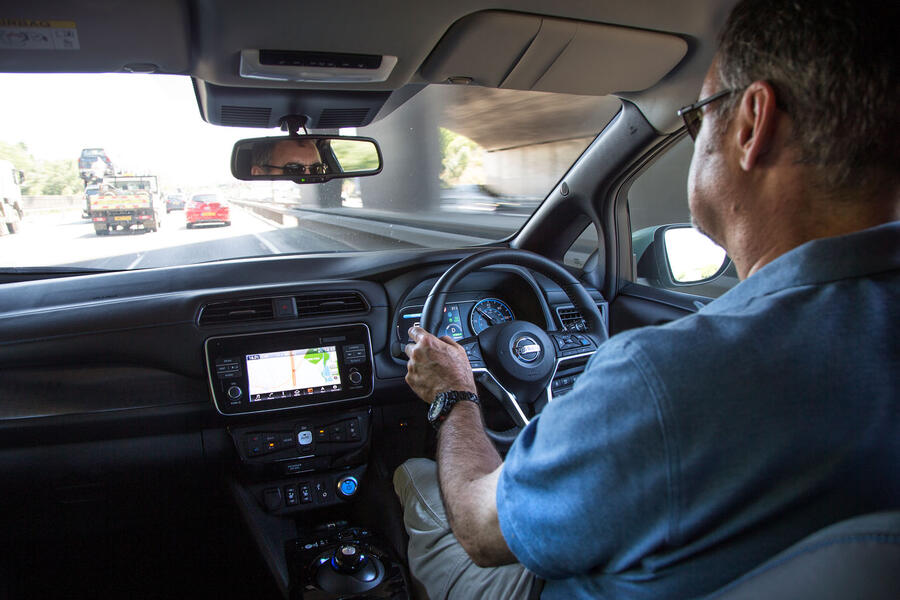
Comments
Post a Comment